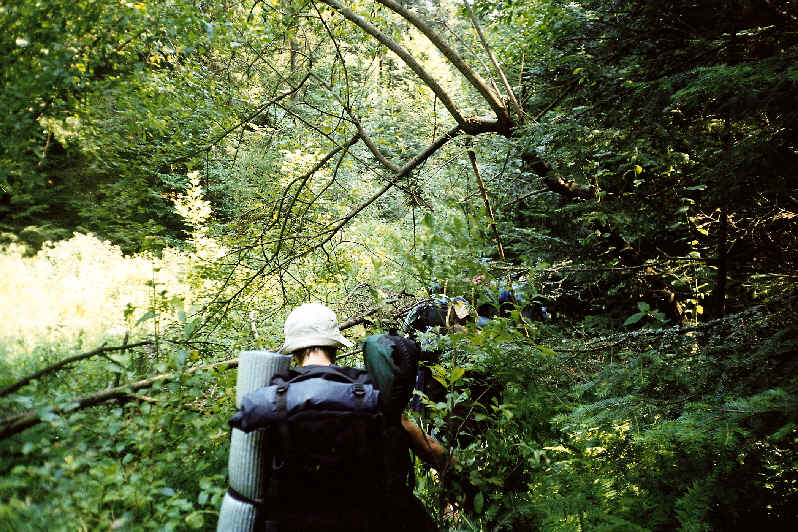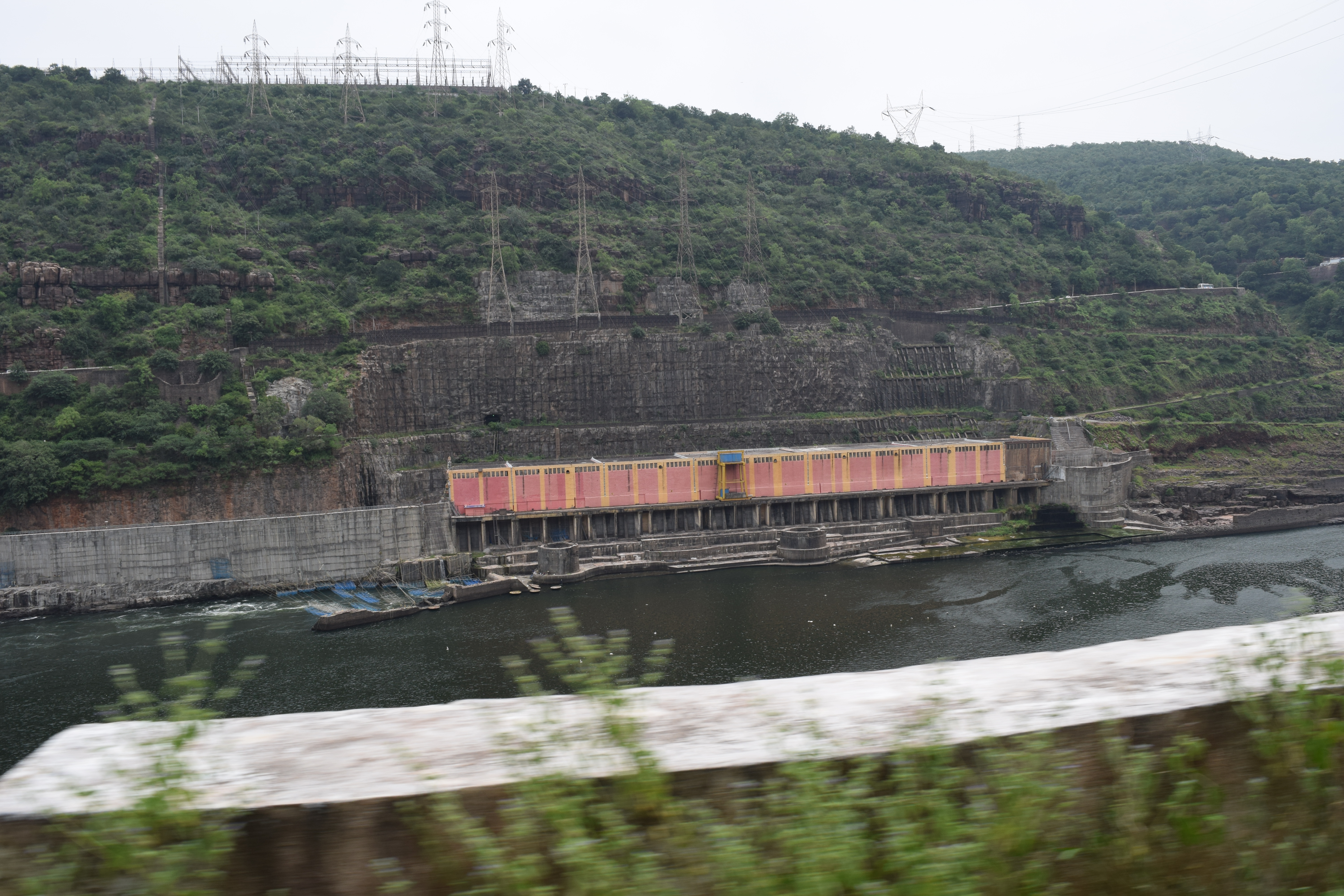|
Sri Sailam
Srisailam is a census town in Nandyal district of the Indian state of Andhra Pradesh. It is the mandal headquarters of Srisailam mandal in Atmakur revenue division. It is located about from the district headquarters Nandyal, from Kurnool, and it is located about from Vijayawada. The town is famous for Mallikarjuna Jyotirlinga Temple and is one of the holy pilgrimage sites for Saivism and Shaktism sects of Hinduism. The town is classified as both Jyotirlinga and Shakti Peetha. Demographics India census, Srisailam had a population of 23,257. Males constituted 54% of the population and females 46%. Srisailam Project (RFC) Township has an average literacy rate of 75.62% higher than the state average of 67.02%. Male literacy is around 85.68% while female literacy rate is 63.24%. 13% of the population is under 6 years of age. Tourism Srisailam is one of the popular tourist destinations in Andhra Pradesh and considered one of the most important pilgrimage centres of Lord Shiva ... [...More Info...] [...Related Items...] OR: [Wikipedia] [Google] [Baidu] |
Census Town
In India and some other countries, a census town is designated as a town that satisfies certain characteristics. India In India, a census town is one which is not statutorily notified and administered as a town, but nevertheless whose population has attained urban characteristics. They are characterized by the following: * Population exceeds 5,000 * At least 75% of main male working population is employed outside the agricultural sector * Minimum population density of 400 persons per km2 Examples of Indian census towns include Avinissery in Thrissur District of Kerala, Greater Noida and Chakeri in Uttar Pradesh, Indranagar in Tripura, Begampur, Chandpara, Nandigram, Chittaranjan and Beliatore in West Bengal, Chevella in Telangana, Amini in Lakshadweep, Deolali in Maharashtra, Ghatshila in Purbi Singhbhum District of Jharkhand, BGR Township ( Bongaigaon Refinery Township) in Bongaigaon Urban Agglomeration of Assam, Pileru in Andhra Pradesh, Chikhli in Gujarat and Ichgam in ... [...More Info...] [...Related Items...] OR: [Wikipedia] [Google] [Baidu] |
Mallikarjuna Jyotirlinga
Sri Bhramaramba Mallikarjuna Temple or Srisailam Temple is a Hindu temple dedicated to the deities Shiva and Parvati, located at Srisailam in the Indian state of Andhra Pradesh. It is significant to the Hindu sects of both Shaivism and Shaktism as this temple is referred to as one of the twelve Jyotirlingas of Shiva and as one of the eighteen Shakti Peethas, centres of the Hindu Goddess. Shiva is worshiped as Mallikarjuna, and is represented by the ''lingam''. His consort Parvati is depicted as Bhramaramba. Legend When Shiva and Parvati decided to find suitable brides for their sons. Shiva got Buddhi (intellect), Siddhi (spiritual power), and Riddhi (prosperity) married to Ganesha. Kartikeya on his return was enraged and went away to stay alone on Mount Kraunja in the name of ''Kumarabrahmachari''. On seeing his father coming over to pacify him, he tried to move to another place, but on the request of the Devas, stayed close by. The place where Shiva and Parvati stayed c ... [...More Info...] [...Related Items...] OR: [Wikipedia] [Google] [Baidu] |
Andhra Pradesh State Road Transport Corporation
Andhra Pradesh State Road Transport Corporation (APSRTC) is the state-owned road transport corporation in the Indian state of Andhra Pradesh. Its headquarters is located at NTR Administrative Block of RTC House in Pandit Nehru bus station of Vijayawada. Many other Indian metro towns in Telangana, Tamil Nadu, Karnataka, Odisha, Yanam, Kerala, Maharashtra and Chhattisgarh are also linked with the APSRTC services. APSRTC was the first state to introduce cargo services and computized system in all depots. APSRTC was the first state to introduce hi-tech luxury bus in government bus sector in India. * APSRTC was the first state transport which uses Live Bus tracking facilities for Tracking of buses. GPS (Global positioning system) is fixed in all types of buses. AIS 140 model, GPS devices are used for live tracking of buses. * First to Introduce Digital Payments, QR - Tickets, E-Pos machines for ticketing across entire State. History APSRTC was formed on 11 January 1958 as pe ... [...More Info...] [...Related Items...] OR: [Wikipedia] [Google] [Baidu] |
Trekking
Backpacking is the outdoor recreation of carrying gear on one's back, while hiking for more than a day. It is often an extended journey, and may involve camping outdoors. In North America tenting is common, where simple shelters and mountain huts, widely found in Europe, are rare. In New Zealand, hiking is called tramping and tents are used alongside a nationwide network of huts. Hill walking is an equivalent in Britain (but this can also refer to a day walk), though backpackers make use of a variety of accommodation, in addition to camping. Backpackers use simple huts in South Africa. Trekking and bushwalking are other words used to describe such multi-day trips. Backpacking as a method of travel is a different activity, which mainly uses public transport during a journey which can last months. Definition Backpacking is an outdoor recreation where gear is carried in a backpack. This can include food, water, bedding, shelter, clothing, stove, and cooking kit. Given that back ... [...More Info...] [...Related Items...] OR: [Wikipedia] [Google] [Baidu] |
Nagarjunsagar-Srisailam Tiger Reserve
Nagarjunsagar-Srisailam Tiger Reserve is the largest tiger reserve in India. The reserve spreads over five districts, Kurnool District, Prakasam District, Guntur District, Nalgonda District and Mahabub Nagar district. The total area of the tiger reserve is . The core area of this reserve is . The reservoirs and temples of Srisailam are major attraction for many tourists and pilgrims. It is the largest tiger reserve forest in India and is located inside Nallamala forest area. Geography This reserve is located between longitude: 78°30' to 79°28' east and latitude: 15°53' to 16°43' north. Elevation varies from to above mean sea level. Average annual rainfall is . The hill ranges contain a number of plateaus, of which, Amrabad, Srisailam, Peddacheruvu, Sivapuram, and Nekkanti are noteworthy. Nagarjunasagar receives rains from the southwest monsoon, which is active from the second half of June to the end of September. The Krishna river cuts its basin almost deep over a ... [...More Info...] [...Related Items...] OR: [Wikipedia] [Google] [Baidu] |
Srisailam Dam
The Srisailam Dam is constructed across the Krishna River in Nagarkurnool district , Telangana and Nandyal district, Andhra Pradesh near Srisailam temple town and is the 2nd largest capacity working hydroelectric station in India. The dam was constructed in a deep gorge in the Nallamala Hills in between Kurnool and Nagarkurnool districts, above sea level. It is long, maximum height and has crest gates. It has a reservoir of . Project has an estimated live capacity to hold 178.74 Tmcft at its full reservoir level of MSL. It's gross storage capacity is 6.116 cubic kms (216 tmc ft). The minimum draw down level (MDDL) of the reservoir is at MSL from its river sluice gates and corresponding dead storage is 3.42 Tmcft. The left bank underground power station houses reversible Francis-pump turbines for pumped-storage operation (each Turbine can pump 200 cumecs) and the right bank semi under ground power station houses Francis-turbine generators. Tail pond dam/weir loc ... [...More Info...] [...Related Items...] OR: [Wikipedia] [Google] [Baidu] |
Lord Shiva
Shiva (; sa, शिव, lit=The Auspicious One, Śiva ), also known as Mahadeva (; ɐɦaːd̪eːʋɐ, or Hara, is one of the principal deities of Hinduism. He is the Supreme Being in Shaivism, one of the major traditions within Hinduism. Shiva is known as "The Destroyer" within the Trimurti, the Hindu trinity which also includes Brahma and Vishnu. In the Shaivite tradition, Shiva is the Supreme Lord who creates, protects and transforms the universe. In the goddess-oriented Shakta tradition, the Supreme Goddess (Devi) is regarded as the energy and creative power (Shakti) and the equal complementary partner of Shiva. Shiva is one of the five equivalent deities in Panchayatana puja of the Smarta tradition of Hinduism. Shiva has many aspects, benevolent as well as fearsome. In benevolent aspects, he is depicted as an omniscient Yogi who lives an ascetic life on Mount Kailash as well as a householder with his wife Parvati and his three children, Ganesha, Kartikeya and As ... [...More Info...] [...Related Items...] OR: [Wikipedia] [Google] [Baidu] |
Census
A census is the procedure of systematically acquiring, recording and calculating information about the members of a given population. This term is used mostly in connection with national population and housing censuses; other common censuses include censuses of agriculture, traditional culture, business, supplies, and traffic censuses. The United Nations (UN) defines the essential features of population and housing censuses as "individual enumeration, universality within a defined territory, simultaneity and defined periodicity", and recommends that population censuses be taken at least every ten years. UN recommendations also cover census topics to be collected, official definitions, classifications and other useful information to co-ordinate international practices. The UN's Food and Agriculture Organization (FAO), in turn, defines the census of agriculture as "a statistical operation for collecting, processing and disseminating data on the structure of agriculture, covering th ... [...More Info...] [...Related Items...] OR: [Wikipedia] [Google] [Baidu] |
Shakti Peetha
The Shakti Pitha or the Shakti Peethas ( sa, शक्ति पीठ, , ''seat of Shakti'') are significant shrines and pilgrimage destinations in Shaktism, the goddess-centric denomination in Hinduism. The shrines are dedicated to various forms of Adi Shakti. Various Puranas such as Srimad Devi Bhagavatam state the existence of varying number of 51, 64 and 108 Shakti peethas of which 18 are named as Astadasha ''Maha'' (major) in medieval Hindu texts. Various legends explain how the Shakti Peetha came into existence. The most popular is based on the story of the death of the goddess Sati. Out of grief and sorrow, Lord Shiva carried Sati's body, reminiscing about their moments as a couple, and roamed around the universe with it. Lord Vishnu had cut her body into 51 body parts, using his Sudarshana Chakra, which fell on Earth to become sacred sites where all the people can pay homage to the Goddess. To complete this massively long task, Lord Shiva took the form of Bhairava. ... [...More Info...] [...Related Items...] OR: [Wikipedia] [Google] [Baidu] |
Jyotirlinga
A Jyotirlinga () or Jyotirlingam, is a devotional representation of the Hindu god Shiva. The word is a Sanskrit compound of ('radiance') and ('sign'). The Śiva Mahāpurāṇam (also ''Shiva Purana'') mentions 64 original ''jyotirlinga'' shrines in India, 12 of which are most sacred and they are called the Maha Jyotirlingam (The Great Jyotirlinga.) Hinduism Legend According to a Shaiva legend from the Shiva Purana, once, Brahma (the god of creation) and Vishnu (the god of preservation) had an argument over their supremacy. To settle the debate, Shiva pierced the three worlds, appearing as a huge, infinite pillar of light, the ''jyotirlinga.'' Brahma and Vishnu decided to ascend and descend across the pillar of light respectively, to find the end of the light in either direction. According to some iterations, Vishnu assumed his Varaha avatar to achieve this task, while Brahma rode a hamsa (swan). Brahma lied that he had discovered the end of the light, producing a ketak ... [...More Info...] [...Related Items...] OR: [Wikipedia] [Google] [Baidu] |







